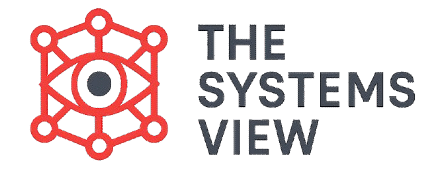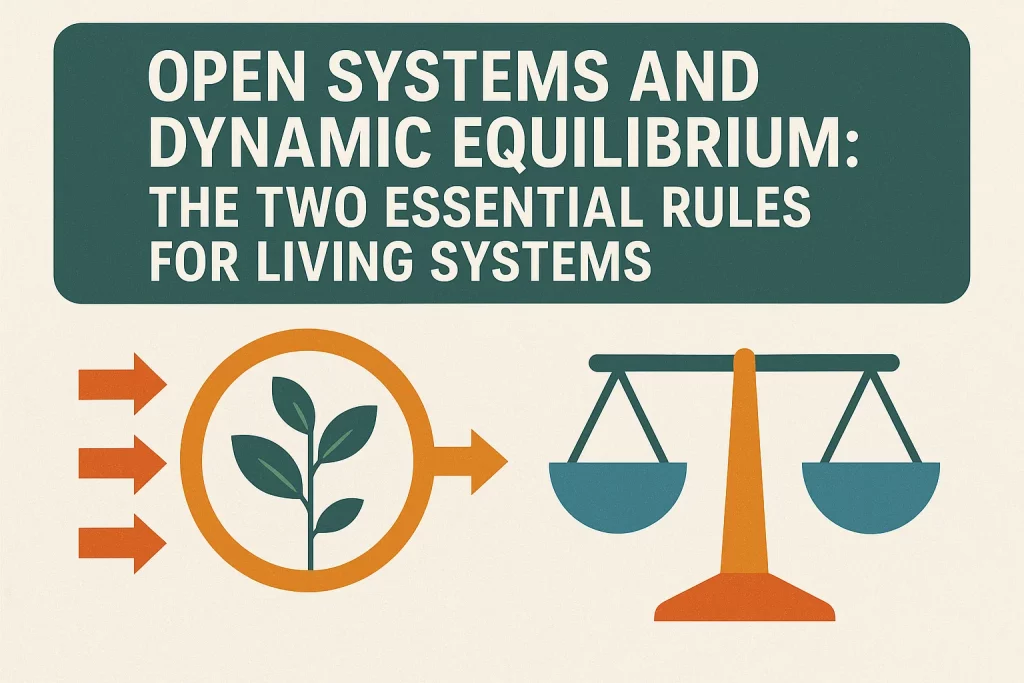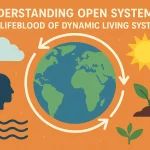When we look at any living organism, whether it’s a human, a tree, or even a single cell, we see something incredibly complex that seems to resist the natural process of decay. How do living things manage to stay organized and keep going? The founders of General Systems Theory (GST) answered this question with two key ideas: Open Systems and Dynamic Equilibrium.
These two ideas, pioneered by Ludwig von Bertalanffy, are the fundamental rules for all organized, living matter. They explain how a system can maintain its form and structure while constantly changing the materials inside it.
Open Systems: The Necessity of Flow
The most basic principle of living systems is that they are open. This concept contrasts sharply with the idea of a closed system, which only exchanges energy (like heat) with its environment but not matter.
Defining the Open System
An open system is any system that must constantly exchange both matter and energy across its boundaries to survive.
- Input: The system must continually take in energy and resources from its environment (e.g., food, air, sunlight, information).
- Output: The system must continually expel waste, heat, and outputs back into its environment (e.g., waste products, finished goods, actions).
If an open system stops exchanging matter and energy—if it “closes” its boundary—it will quickly cease to function. A living cell dies if it cannot take in nutrients and expel waste. A company fails if it stops taking in revenue and stops delivering a product.
Escaping Universal Decay
The reason open systems are so important is that they defy the universal law of Entropy, which states that all systems tend toward disorder and decay. By continuously importing new, organized energy and exporting old, chaotic energy, an open system fights back against decay, maintaining its complex structure over time.
Dynamic Equilibrium: The Flowing Balance
If an open system is always changing the matter inside it, how does it maintain a stable form? The answer is Dynamic Equilibrium (sometimes called steady state).
The Constant Balancing Act
Dynamic Equilibrium is a state where the system’s overall form and structure remain constant and recognizable, even though the actual materials making up the system are being continuously replaced.
- Dynamic (Changing): The internal components are constantly flowing and transforming. The system is never static or still. For example, the cells in your body are constantly dying and being replaced.
- Equilibrium (Balanced): The rate of input is equal to the rate of output. The system is organized to maintain a balance of its key variables (e.g., maintaining a constant body temperature or keeping the number of employees stable).
This flowing balance allows living systems to be both stable and flexible. They can adapt to external changes without falling apart.
Maintaining Structure Through Flow
Think of a river: the water flowing through it is always new, and every molecule is constantly moving. Yet, the form of the river—its boundaries, its course, and its overall identity—remains the same year after year. The river exists in dynamic equilibrium.
The Two Essential Rules
Open Systems and Dynamic Equilibrium are inseparable. The state of dynamic equilibrium is only possible because the system is open, constantly importing and exporting to keep its internal balance flowing.
| Concept | What It Does | Why It’s Essential |
| Open System | Defines the boundary, requiring continuous exchange of matter and energy. | Allows the system to fight Entropy and bring in the energy needed for organization. |
| Dynamic Equilibrium | Defines the internal state, keeping the structure stable through balanced flow. | Allows the system to maintain its Form and identity despite constant internal change. |
These two rules demonstrate the fundamental holistic idea of Systems Thinking: that life is defined by flow and relationship with its environment, not by its static parts.
Conclusion
Open Systems and Dynamic Equilibrium are the two essential rules that explain the nature of all living and organized systems. They describe a system that is constantly interacting with its environment, fighting decay, and maintaining a stable, organized form through a perfect, continuous flow of matter and energy. Understanding these two concepts is the first step toward understanding how any complex system manages to survive and adapt in a constantly changing world.



